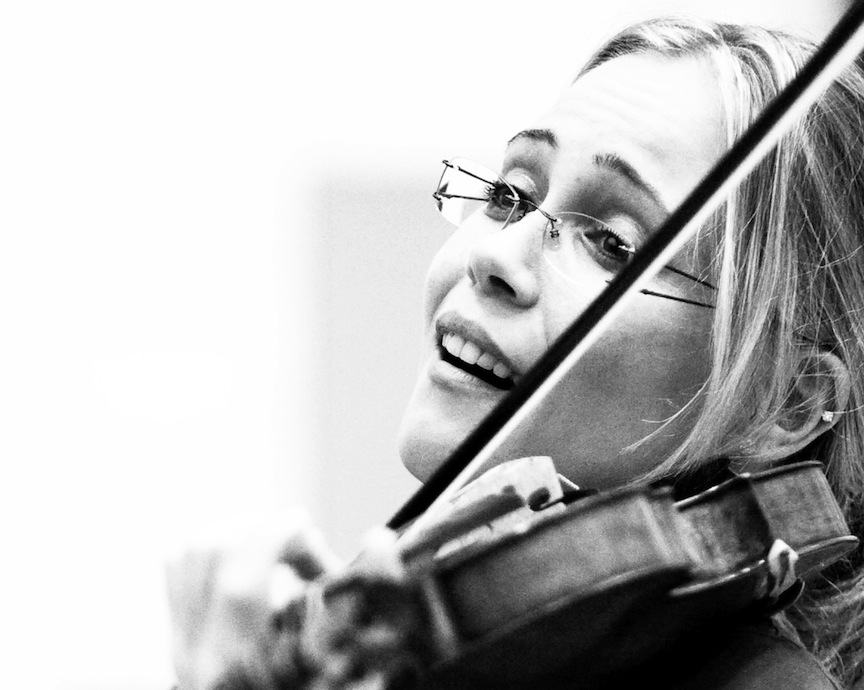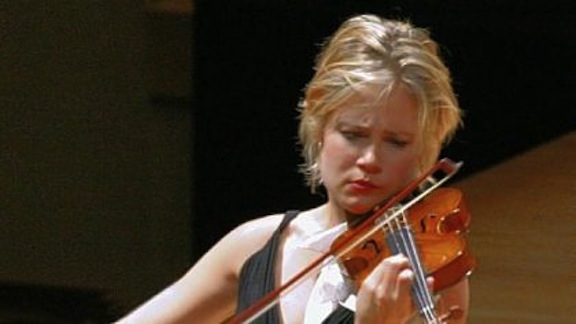
A few minutes into an interview, violinist Leila Josefowicz sums up our purpose neatly: “Music is something to be celebrated, and that’s what I’m sure of, really. We must always keep doing that with music and remember that.”
The Mississauga-born American child prodigy is 35 now, already boasting a veteran’s career. She has pretty much seen it all, yet continues to vibrate with enthusiasm at the prospect of setting foot on another stage.
Long a regular visitor to Toronto, Josefowicz is coming to town Thursday for a solo recital at the Flato Markham Theatre, an intimate venue ideal for a programme that includes 19th century as well as contemporary music.
Her accompanist is John Novacek, whom she has known and worked with since she was 8.
Thursday’s programme opens with a Sonatensatz (sonata movement) by Johannes Brahms and Robert Schumann’s first Sonata for violin and piano.
The violinist describes the Schumann as “one of the most beautiful pieces in the violin-piano repertoire,” that is usually only played by students. “It really deserves to be heard.”
The contemporary works on the programme are a triptych by György Kurtág — “There are very few notes in the outer movements and they say so much” — and American composer John Adam’s 1995 three-piece suite, Road Movies, which brims with a happy rhythmic vitality.
Josefowicz says she has played every piece Adams has written for violin. “I’m so proud of how the world has embraced him. He’s such a fascinating person – but I could say that about all the composers I work with,” she explains. “That’s the reason I stay inspired, because I feel I’m part of the creative source rather than looking at a piece from a distance.”
The artist doesn’t just see herself as an interpreter, but as a muse for today’s composers.
“I want to be that for them. I want to push their boundaries. I want to say to them and make them feel that this is possible, that we can go even further,” she says with her infectious enthusiasm.
Esa-Pekka Salonen wrote a new violin concerto for her in 2009, now available on disc.
“Just go crazy,” is how Josefowicz describes what she insisted on with Salonen. “Don’t think at all about whether this is playable or not playable; I will tell you if it is literally some physical impossibility. I want you only to think about the gestures of what you want to happen in the music.”
She thinks this is the only way to go. “I think that has a very good effect and I’m proud to have been able to make that contribution.”
“If, at the end of my career I can say I’ve commissioned 10 masterworks from great living composers and have them for the next generations of violinists, I’ll feel I’ve done a good job,” she adds.
But when anyone takes on new music, they also take on the burden of all the people who’d rather not listen to it. For Josefowicz, this is a challenge to work even harder.
“My job, as I see it, is to play something, even if it doesn’t seem on paper to be very accessible and to do it in such a way that communicates with the audience,” the artist states. “If I’m doing my job right, there should be something that speaks.”
In the best of all possible worlds, Josefowicz would prefer we all approach music in the same way she does: not just with an open mind, but in the spirit of curiosity.
“There is an adventurous and fun way to hear music, which is the same way that Lewis and Clark walked across America,” says Josefowicz. “You don’t know what’s coming and the whole excitement is in what you’re going to discover and experience and feel.”
+++
For ticket details, click here (note that the programme information is wrong on the Markham Theatre website). Besides the four works already mentioned, the recital will also include Manuel de Falla’s Suite populaire espagnole.
+++
Here’s a foretaste of the John Adams work.
These are the composer’s original notes from 1995:
The title “Road Movies” is total whimsy, probably suggested by the “groove” in the piano part, all of which is required to be played in a “swing” mode (second and fourth of every group of four notes are played slightly late).
Movement I is a relaxed drive down a not unfamiliar road. Material is recirculated in a sequence of recalls that suggest a rondo form.
Movement II is a simple meditation of several small motives. A solitary figure in a empty desert landscape.
Movement III is for four wheel drives only, a big perpetual motion machine called “40% Swing”. On modern MIDI sequencers the desired amount of swing can be adjusted with almost ridiculous accuracy. 40% provides a giddy, bouncy ride, somewhere between an Ives ragtime and a long rideout by the Goodman Orchestra, circa 1939. It is very difficult for violin and piano to maintain over the seven-minute stretch, especially in the tricky cross-hand style of the piano part. Relax, and leave the driving to us.
And here is violinist David Felberg and pianist Conor Hanick in concert with Road Movies:
John Terauds
